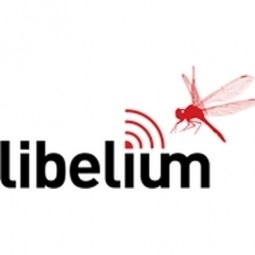Download PDF
Enhancing Environmental Control and Reducing Emissions in Nordic Smart Cities

Technology Category
- Analytics & Modeling - Big Data Analytics
- Networks & Connectivity - Gateways
- Networks & Connectivity - LoRa
- Sensors - Gas Sensors
Applicable Industries
- Cities & Municipalities
Use Cases
- Continuous Emission Monitoring Systems
The Challenge
Municipalities and public institutions are concerned about air, water, noise or lighting pollution in cities. In the last years, it has become mandatory through several international regulations to reduce emissions that could impact in the environment and also inhabitants lives.
Being a Smart City is more than just a trend, is a commitment with society and stakeholders.
Carbon Track and Trace Project (CTT) aim is reducing CO2 emissions, combating climate change in cities and also developing a decision support system for cities greenhouse gas (GHG) emissions monitoring. It was funded by the Low Carbon City Lab flagship of the EU Climate KIC programme.
The Customer
Trondheim (Norway) and Vejle (Denmark)
About The Customer
Trondheim (Norway) and Vejle (Denmark)
The Solution
The Norwegian University of Science and Technology (NTNU) has led this project based on wireless sensor networks with Libelium Waspmote Sensor Platform. The Smart City plan has been deployed in two Nordic municipalities as test beds: Trondheim (Norway) and Vejle (Denmark).
The first stage of CTT project revealed a significant gap between Norwegian municipalities’ current methodologies and official standards for greenhouse gas emissions (GHG) monitoring and reporting. This difference was also detected in worldwide cities. Current phase, CTT 2.0, has focused on developing an automated system for GHG emissions monitoring and reporting, through the use of bottom-up sensor-based measurements.
Technicians have chosen Libelium open-source hardware and sensor technology to develop this real-time monitoring system. The factors that have motivated are the following:
• Ease of use
• Availability of calibrated sensors
• Compatibility with LoRaWAN
• Weather proof enclosure for the technology
• Encapsuled versions with easy deployment
Wireless sensor networks deployed in Trondheim and Vejle are based in Plug & Sense! Smart Environment PRO, a platform that features maximum performance sensors for metering that require accurate ppm or percentage and are able to read up to 16 gas sensors. For this deployment the sensors installed have been: carbon dioxide (CO ), nitric oxide (NO), particle matter – dust (PM1, PM2.5 and PM10), temperature, pressure and humidity.
Communication between Waspmote Plug & Sense! nodes and gateways is done through LoRaWAN, while the gateways communicate with the cloud through a common Ethernet wiring. CTT2.0 currently uses The Things Network as a cloud backend which is an opensource community aimed at creating a global IoT network based on LoRaWAN.
The application developed to visualise data is CTT Urban Overview that allows monitoring the network itself and also data analysis. Data is taken from sensors nodes as well as external information sources and is used to analyse and calibrate the measurements and conflate them to build a detailed overview of emissions in the city.
Trondheim and Vejle wanted to get a platform to visualise the information and allow the analysis of the measurement data. This valuable information is helpful to know in real-time gas emissions and pollution levels to meet environmental regulations and get feedback about mitigation actions.
“TCTT Urban Overview giving information from a node deployed in Vejlehe main goal of CTT2.0 is to provide a city with an automated system for GHG emissions monitoring and reporting, with the requirement of direct feedback of the city’s emissions reduction initiatives. Thus, an accompanying goal is integration of CTT2.0 into a city’s decision support system“, affirmed Fredrik Anthonisen, technical manager of CTT Project.
This project wants to provide municipalties and public institutions with an open system to allow inhabitants know what happens in their cities in relation to GHG and pollution. The platform will offer open data not only for citizens but also for research institutions or companies to develop other projects.
The first stage of CTT project revealed a significant gap between Norwegian municipalities’ current methodologies and official standards for greenhouse gas emissions (GHG) monitoring and reporting. This difference was also detected in worldwide cities. Current phase, CTT 2.0, has focused on developing an automated system for GHG emissions monitoring and reporting, through the use of bottom-up sensor-based measurements.
Technicians have chosen Libelium open-source hardware and sensor technology to develop this real-time monitoring system. The factors that have motivated are the following:
• Ease of use
• Availability of calibrated sensors
• Compatibility with LoRaWAN
• Weather proof enclosure for the technology
• Encapsuled versions with easy deployment
Wireless sensor networks deployed in Trondheim and Vejle are based in Plug & Sense! Smart Environment PRO, a platform that features maximum performance sensors for metering that require accurate ppm or percentage and are able to read up to 16 gas sensors. For this deployment the sensors installed have been: carbon dioxide (CO ), nitric oxide (NO), particle matter – dust (PM1, PM2.5 and PM10), temperature, pressure and humidity.
Communication between Waspmote Plug & Sense! nodes and gateways is done through LoRaWAN, while the gateways communicate with the cloud through a common Ethernet wiring. CTT2.0 currently uses The Things Network as a cloud backend which is an opensource community aimed at creating a global IoT network based on LoRaWAN.
The application developed to visualise data is CTT Urban Overview that allows monitoring the network itself and also data analysis. Data is taken from sensors nodes as well as external information sources and is used to analyse and calibrate the measurements and conflate them to build a detailed overview of emissions in the city.
Trondheim and Vejle wanted to get a platform to visualise the information and allow the analysis of the measurement data. This valuable information is helpful to know in real-time gas emissions and pollution levels to meet environmental regulations and get feedback about mitigation actions.
“TCTT Urban Overview giving information from a node deployed in Vejlehe main goal of CTT2.0 is to provide a city with an automated system for GHG emissions monitoring and reporting, with the requirement of direct feedback of the city’s emissions reduction initiatives. Thus, an accompanying goal is integration of CTT2.0 into a city’s decision support system“, affirmed Fredrik Anthonisen, technical manager of CTT Project.
This project wants to provide municipalties and public institutions with an open system to allow inhabitants know what happens in their cities in relation to GHG and pollution. The platform will offer open data not only for citizens but also for research institutions or companies to develop other projects.
Related Case Studies.

Case Study
Turning A Stadium Into A Smart Building
Honeywell created what it called the “intelligent system” for the National Stadium in Beijing, China, turning the venue for the opening and closing events at the 2008 Summer Olympics into a “smart building.” Designed by highly controversial artist Ai Weiwei, the “Bird’s Nest” remains one of the most impressive feats of stadium architecture in the world. The 250,000 square meter structure housed more than 100,000 athletes and spectators at a time. To accommodate such capacity, China turned to Honeywell’s EBI Integrated Building Management System to create an integrated “intelligent system” for improved building security, safety and energy efficiency.
.png)
Case Study
Smart Street Light Network (Copenhagen)
Key stakeholders are taking a comprehensive approach to rethinking smart city innovation. City leaders have collaborated through partnerships involving government, research institutions and solution providers. The Copenhagen Solutions Lab is one of the leading organizations at the forefront of this movement. By bringing together manufacturers with municipal buyers, the Copenhagen Solutions Lab has catalyzed the development and deployment of next-generation smart city innovations. Copenhagen is leveraging this unique approach to accelerate the implementation of smart city solutions. One of the primary focus areas is LED street lighting.

Case Study
Buoy Status Monitoring with LoRa
The Netherlands are well-known for their inland waterways, canals, sluices and of course port activities. The Dutch Ministry of Infrastructure indicates that there are thousands of buoys and fixed items in and near water environments that would profit from IoT monitoring. One of the problems with buoys for example, is that they get hit by ships and the anchor cable breaks. Without connectivity, it takes quite some time to find out that something has happened with that buoy. Not to mention the costs of renting a boat to go to the buoy to fix it. Another important issue, is that there is no real-time monitoring of the buoys at this moment. Only by physically visiting the object on the water, one gains insight in its status.

Case Study
China Mobile Smart Parking
Smart Parking, powered by NB-IoT technology, is making it easier for drivers to find free parking spots. Cities can better manage their parking assets and maximize the revenue available to them as a result. Drivers searching for parking create congestion and pollution by circling and hunting for available parking. Smart Parking services are able to significantly ease these problems by guiding a driver directly to a parking space.

Case Study
Barcelona Case Study
Barcelona’s heavy traffic and its associated high levels of pollution were the primary factors that motivated some companies and universities to work on strategies for improving traffic in the city centre. Bitcarrier is one of the technologies involved in the In4Mo Project, whose main objective is to develop the applications that form the core of smart mobility, one of the fundamental pillars of the smart city concept.






